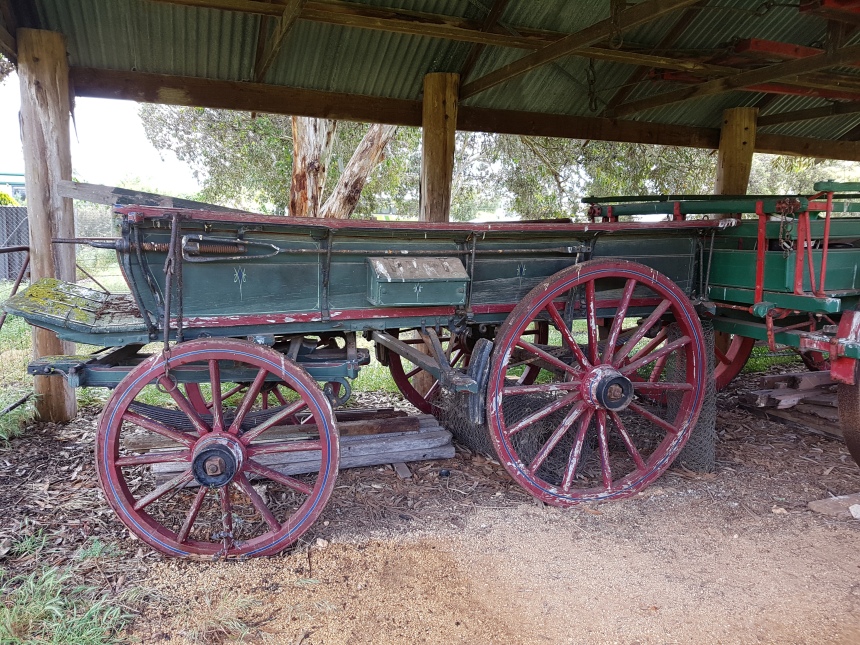In southeast Queensland in the 1920s, my grandfather worked as a timber cutter driving a bullock team on steeply timbered hillsides. For much of the 19thand early 20thcenturies, bullock teams were the main form of cartage in sparsely settled areas of Australia. Most teams comprised at least twelve bullocks, sometimes as many as thirty. They were hardier than horses and able to haul huge loads up mountains and across rivers. During the gold-rush area in Victoria, bullock teams carted wool, timber and other supplies. And when gold diggers from China surprised the residents of Robe, South Australia by landing in tall ships, intent on walking hundreds of miles to the goldfields, it was the bullockies who guided them. I took the photograph above at the ruins of the Kangaroo Inn, one of the first stops along their route.

I have always been interested in this story of the Chinese trek for gold. In the years 1856 and 1857, 16,500 Chinese miners arrived in the tiny port of Robe, to escape a tax imposed by the government of Victoria. All but one were men. I wondered if amongst those thousands of men, another woman might have been hiding. During the research for my previous novel, The Concubine’s Child, I read about the independent women of the silk producing Sam Yap districts of southern China, where young women often lived together in girls’ houses, and some vowed never to marry. Combine these interests with the White Crane and Wing Chun styles of kungfu, which legend tells originated with women, and my grandfather’s story, and the idea for The Boy With Blue Trousers began forming.
And of course, one of the main characters had to be a handsome Welsh bullocky!
Unfortunately I don’t have any photographs of my grandfather’s short career as a bullock driver but the photograph above was taken by photographer Fred Kruger in Victoria in 1880. It shows two bullock teams carting wagons loaded with bales of wool. In The Boy With Blue Trousers several of the characters get to ride atop the bales as the bullocky walks alongside controlling his team.

I took this more recent photograph of a restored bullock wagon in Penola, South Australia, during a road trip where I followed the route from Robe to the Victorian goldfields that was taken by the Chinese miners.
In researching the bullock drivers and their teams I consulted many sources. If you are interested in learning more about bullockies here are two informative and entertaining online sources.
Vic Deaves, Fourth Generation Bushman
https://www.youtube.com/watch?time_continue=791&v=EO0E2Diw4ps
Made by Australia’s Commonwealth Film Unit (now Screen Australia) in 1969, this documentary was directed by Richard Mitchell. It follows Vic Deaves, a fourth-generation bushman, as he goes about his work with a bullock team. He hailed from a family of timber-getters in the hinterland of coastal New South Wales. Vic was one of the last working bullockies. His team could drag logs out of valleys which were too steep and difficult for trucks.
The Bullock Team
http://www.mavisthorpeclark.com.au/article_bullock_team.shtml
This excellent article was written by beloved Australian children’s book author and journalist Mavis Thorpe Clark in 1954 and published in the magazine Walkabout. It is largely based on interviews with old time bullock driver, Eric Storer, of Hotspur a small town in the Western District of Victoria. The characters in The Boy With Blue Trousers are guided by my Welsh bullocky across the plains and valleys of the Western District to reach the goldfields.
Mavis Thorpe Clark was a prolific author, who won Australia’s Children’s Book Council award for The Min Min, set in outback South Australia, in 1967. I remember reading and loving this novel when I was at primary school.
